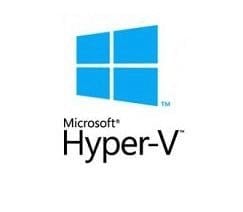wally96334
New member
- Local time
- 5:54 PM
- Posts
- 6
- OS
- Windows 11 Pro
I am trying to set up a virtual machine on my new Windows 11 Pro laptop. I've never tried to set up a virtual machine before, so this is a learning experience.
I've partitioned the SSD drive (as I always do with a new system), establishing three new partitions.
I've downloaded the ISO for Windows 11 and put it on the partition with the C drive:
"Win11_24H2_English_x64.iso"
I went through the creation process, going mostly with the defaults, setting the location for the ISO to the file on the partition with the C drive to use as the source for booting the VM.
I've given a folder on the partition with drive D as the storage space for the VM.
I start the VM, then try to connect to it.
A black window with the following message is shown:
-------------------------------
Press any key to start from a CD or DVD ...
-------------------------------
After pausing for a while, a window pops up with the following message:
Microsoft Hyper-V UEFI
------------------
1: SCSI Disk (0,0)
The Boot loader did not load an operating system.
2: SCSI DVD - (0,1)
The boot loader failed
3: Network Adapter ([a bunch of numbers])
A boot image was not found.
No operating system was loaded. Your virtual machine may be configured incorrectly. Exit and re-configure your VM or click restart to retry the current boot sequence again.
[Restart now]
-------------------------------
Can anyone tell me what it is that I am doing wrong?
Thanks.
I've partitioned the SSD drive (as I always do with a new system), establishing three new partitions.
I've downloaded the ISO for Windows 11 and put it on the partition with the C drive:
"Win11_24H2_English_x64.iso"
I went through the creation process, going mostly with the defaults, setting the location for the ISO to the file on the partition with the C drive to use as the source for booting the VM.
I've given a folder on the partition with drive D as the storage space for the VM.
I start the VM, then try to connect to it.
A black window with the following message is shown:
-------------------------------
Press any key to start from a CD or DVD ...
-------------------------------
After pausing for a while, a window pops up with the following message:
Microsoft Hyper-V UEFI
------------------
1: SCSI Disk (0,0)
The Boot loader did not load an operating system.
2: SCSI DVD - (0,1)
The boot loader failed
3: Network Adapter ([a bunch of numbers])
A boot image was not found.
No operating system was loaded. Your virtual machine may be configured incorrectly. Exit and re-configure your VM or click restart to retry the current boot sequence again.
[Restart now]
-------------------------------
Can anyone tell me what it is that I am doing wrong?
Thanks.
- Windows Build/Version
- Win 11 Pro
My Computer
System One
-
- OS
- Windows 11 Pro
- Computer type
- Laptop
- Manufacturer/Model
- HP OmniBook 7-Flip

























